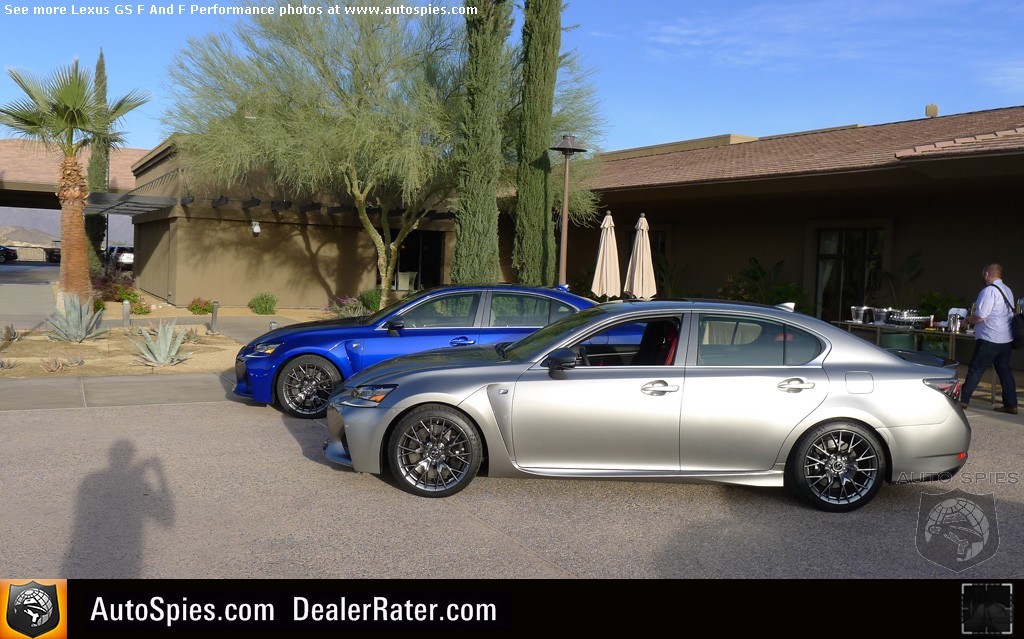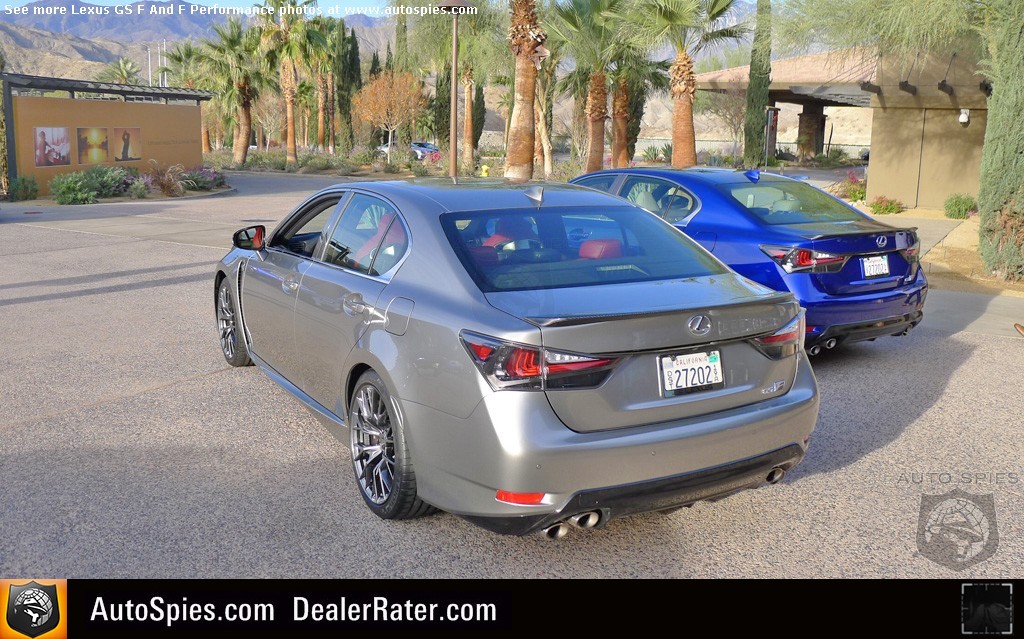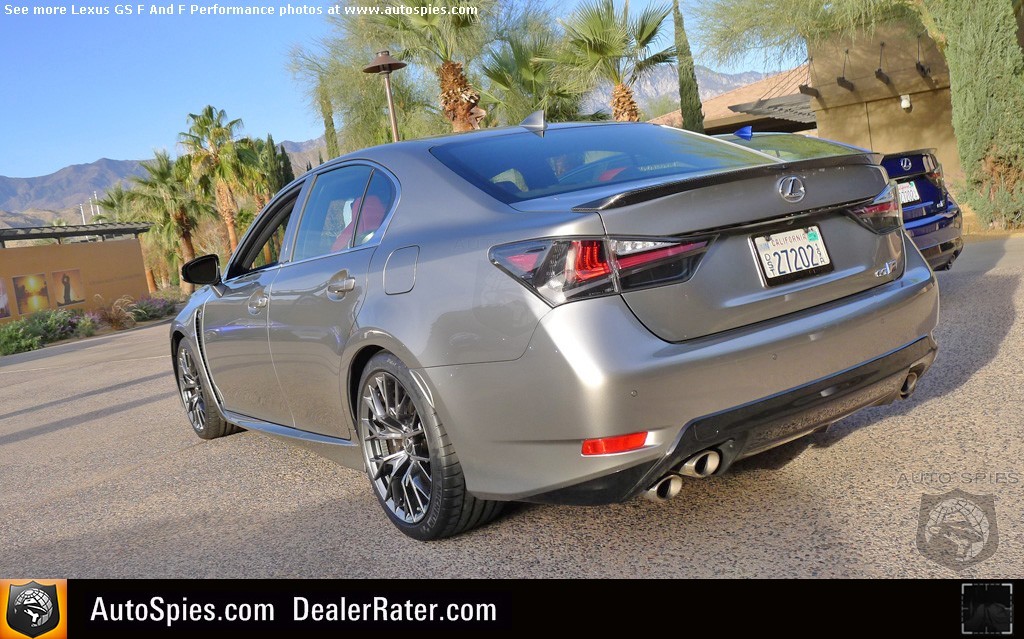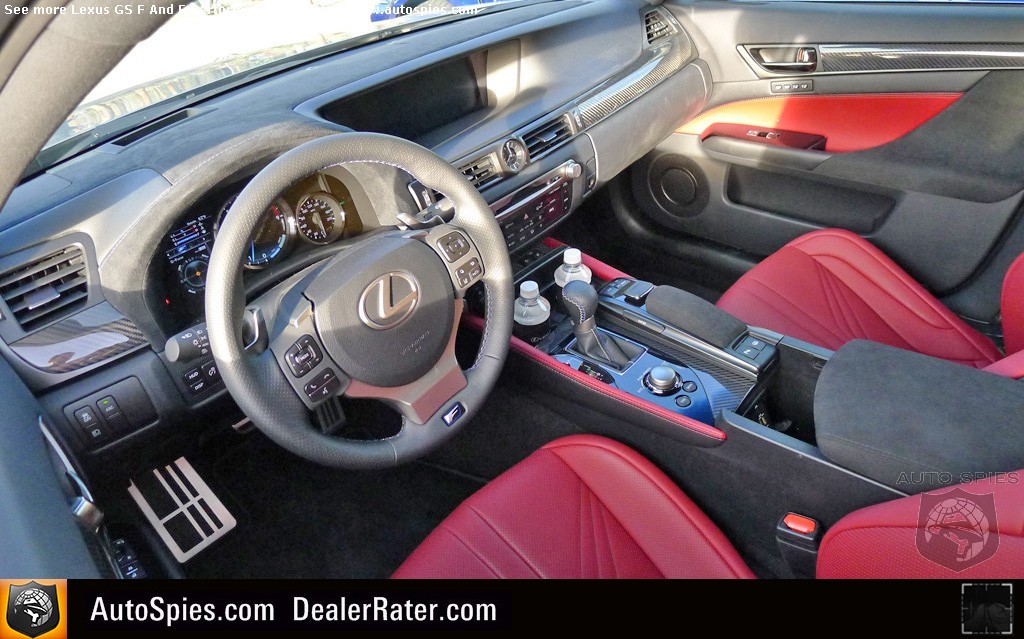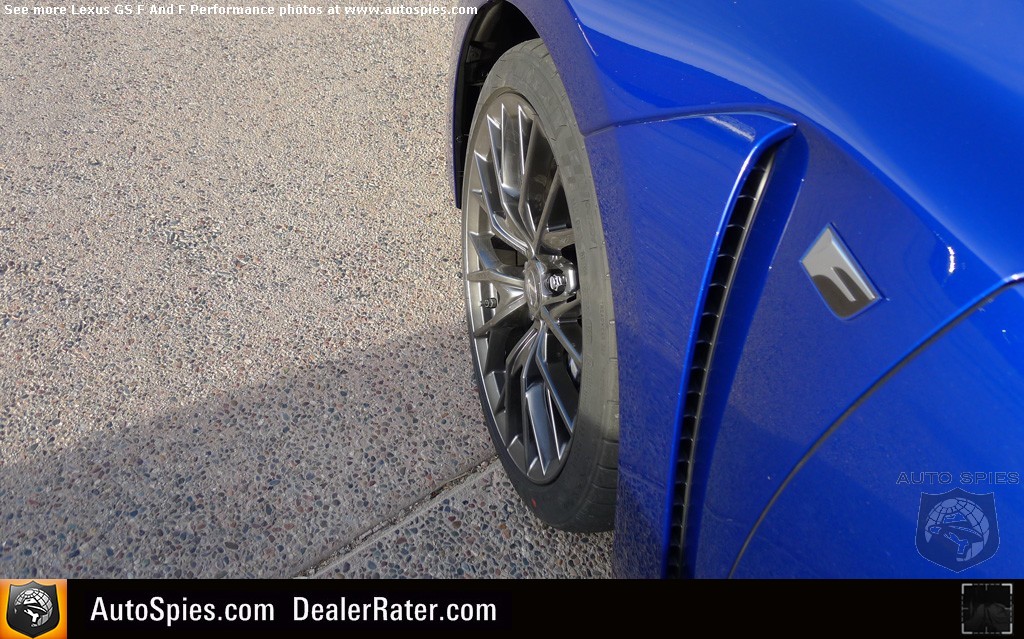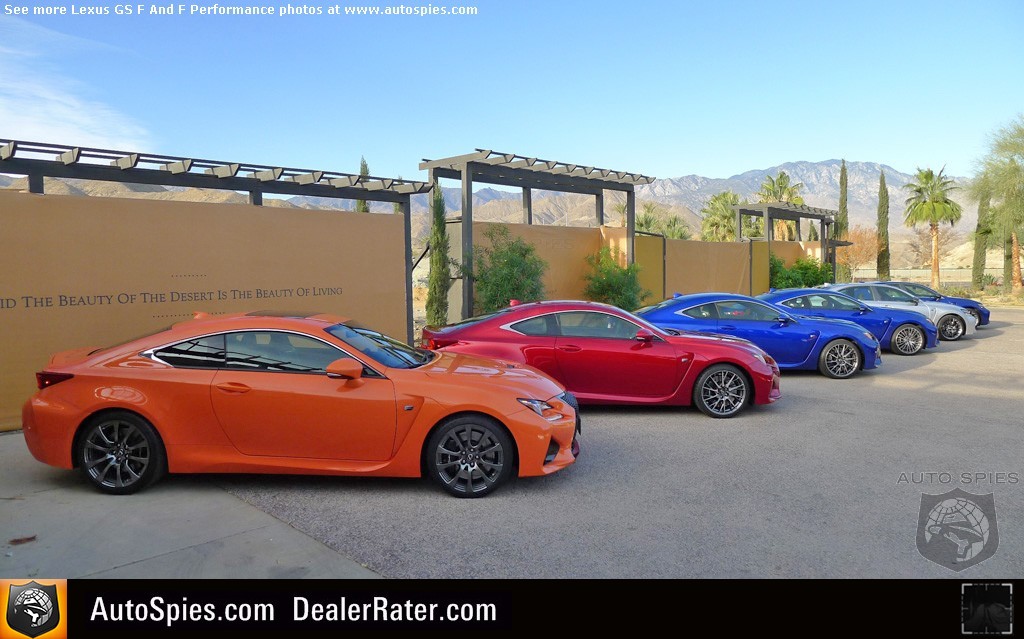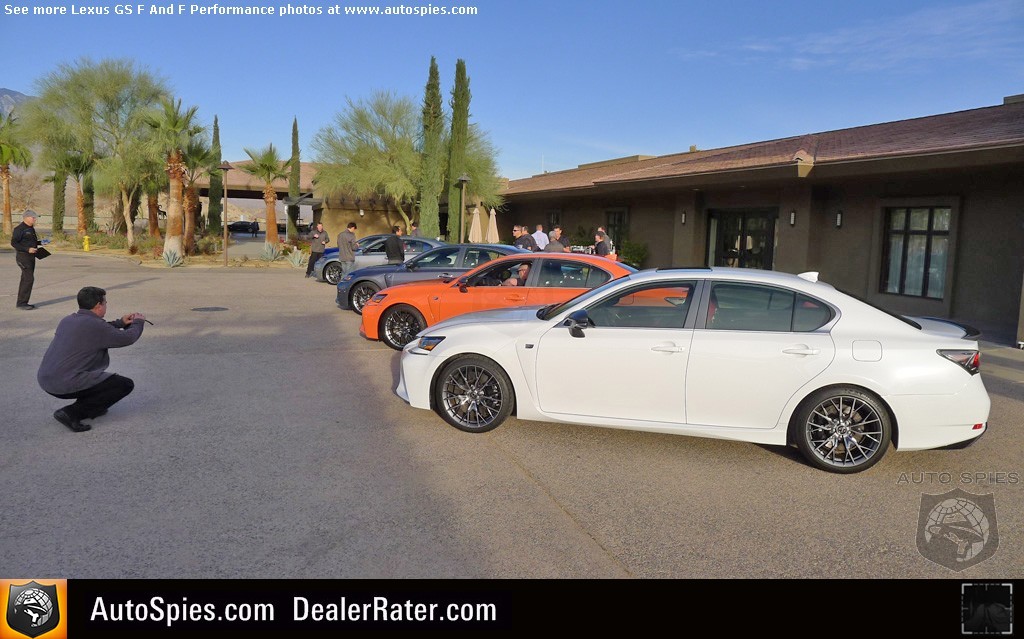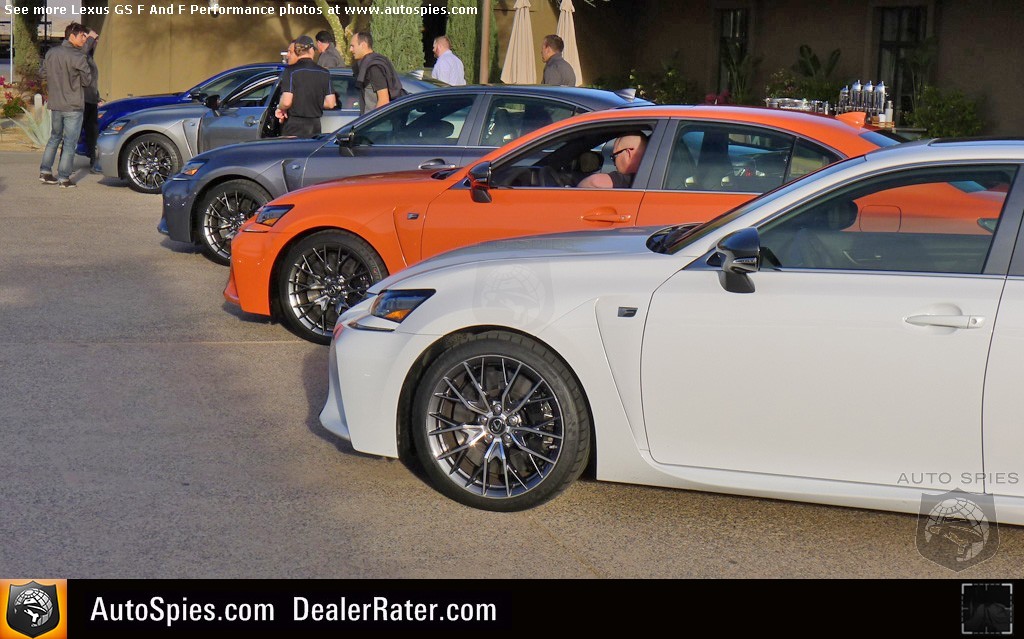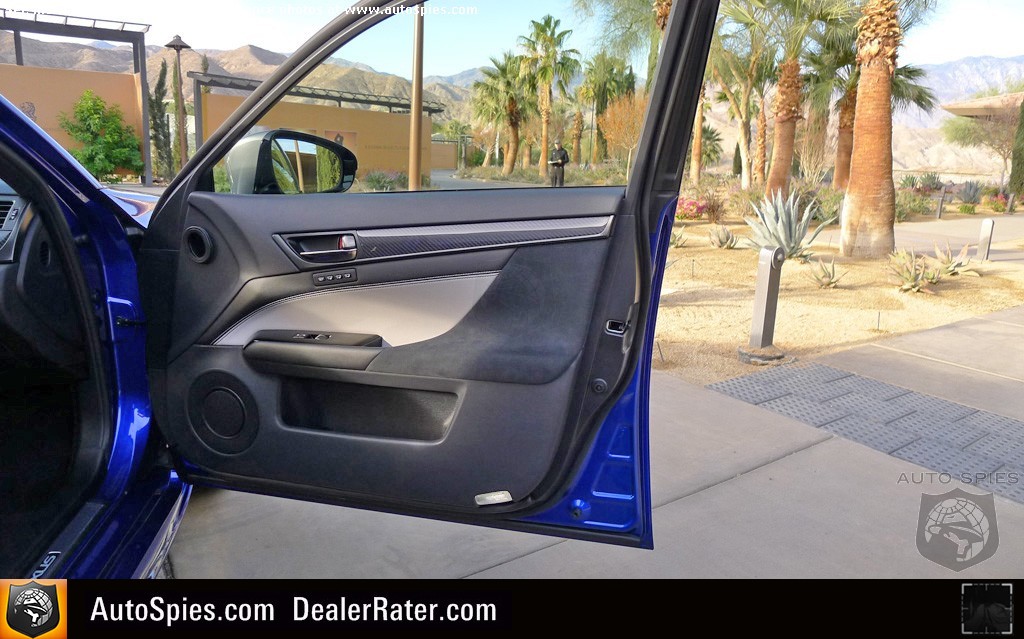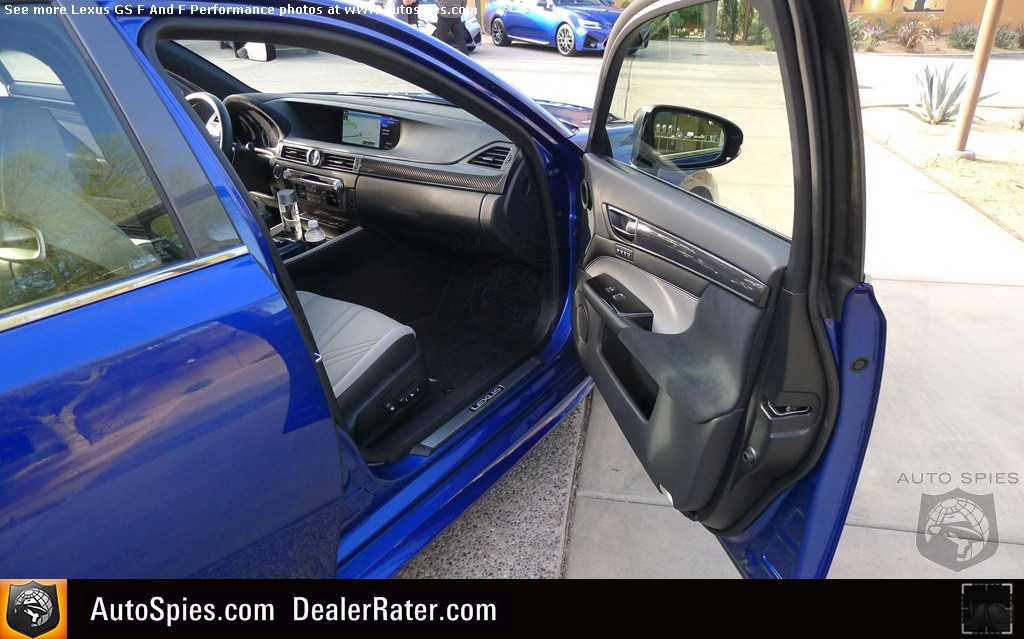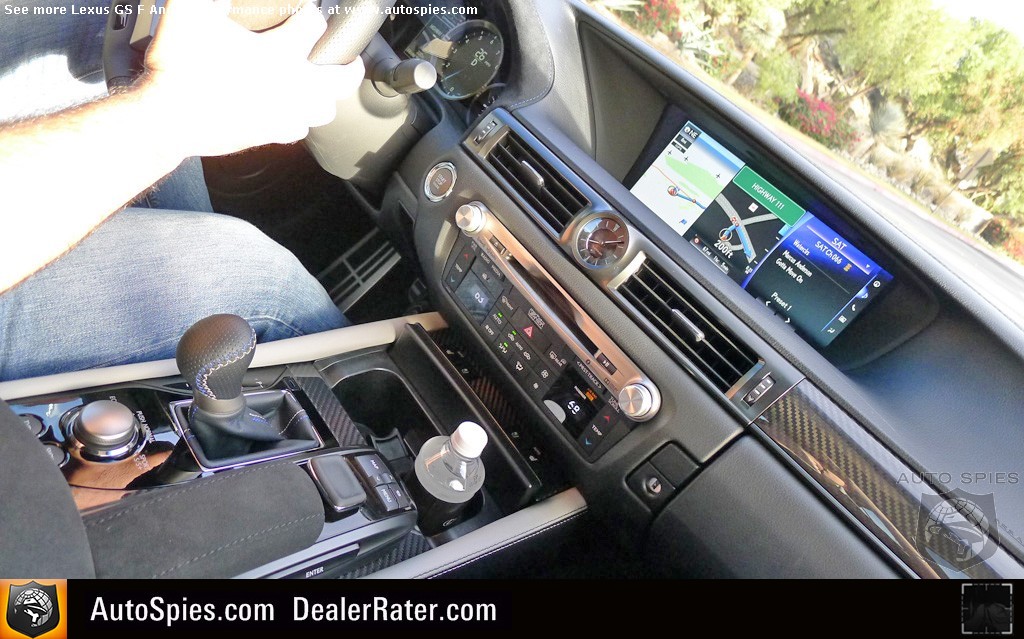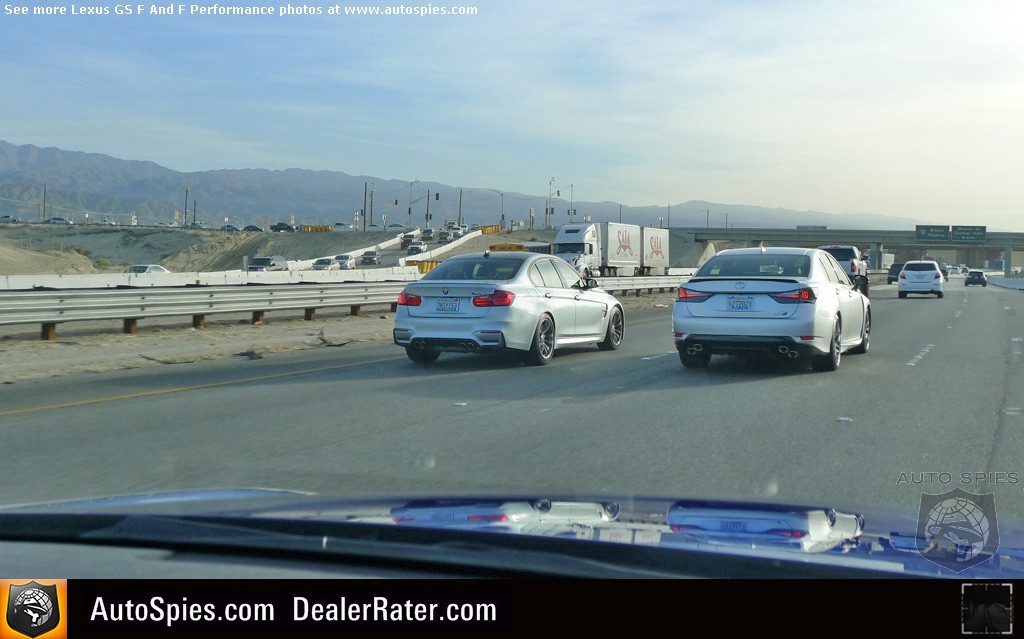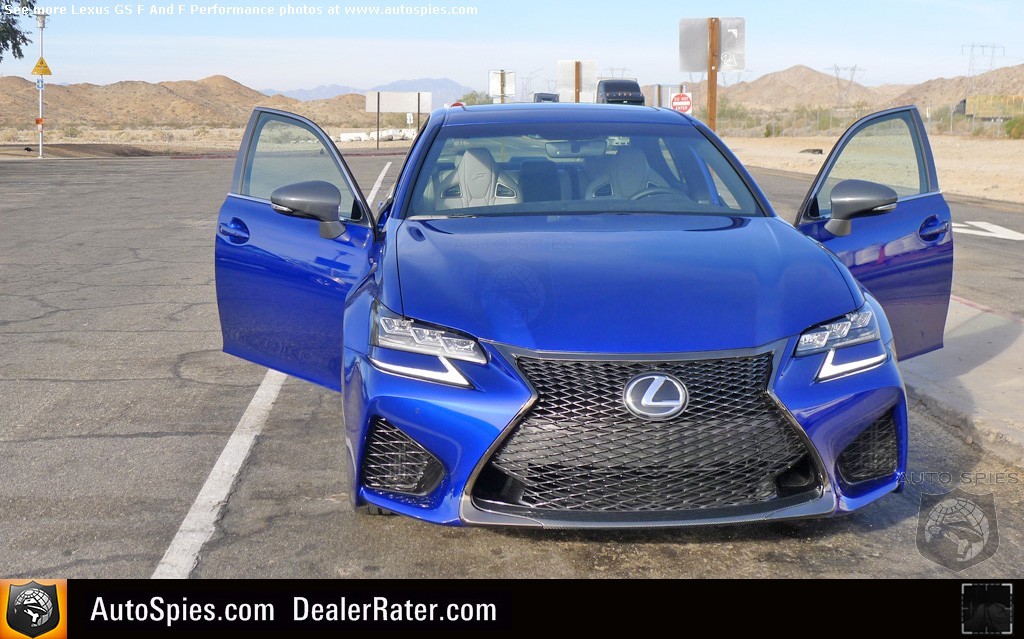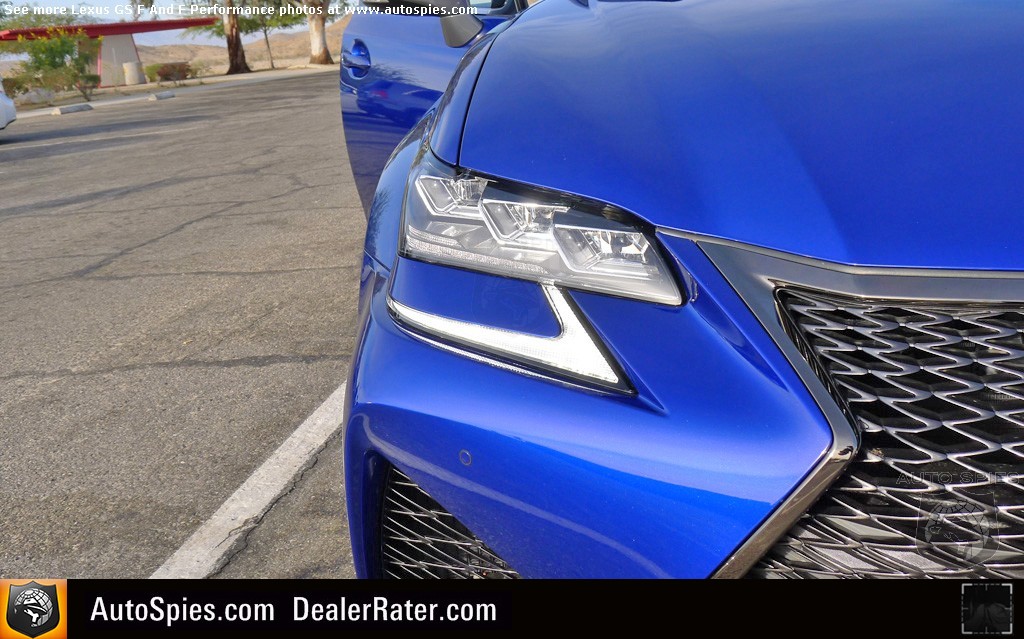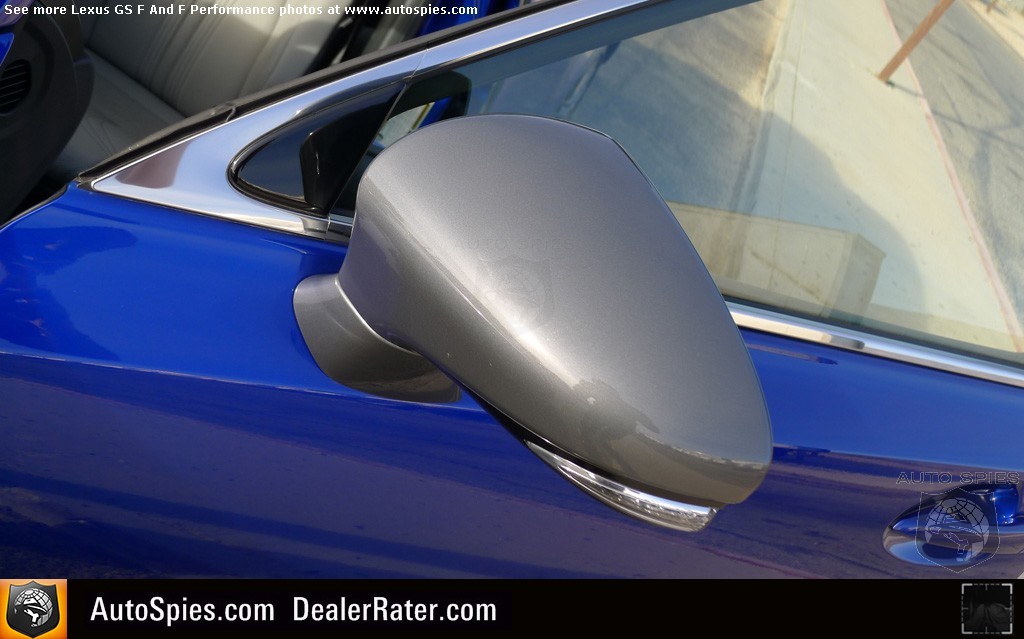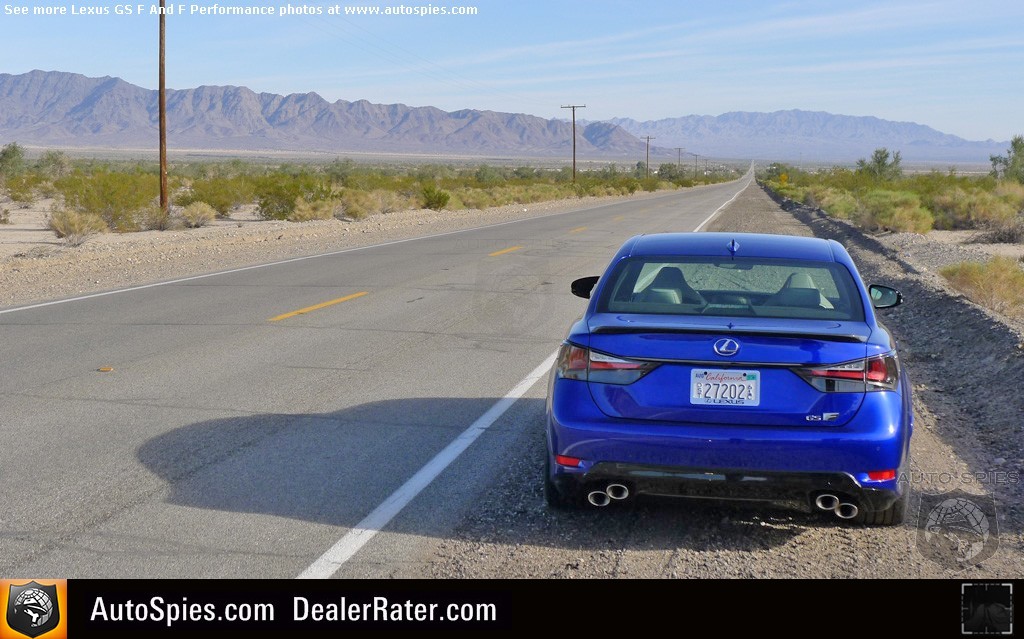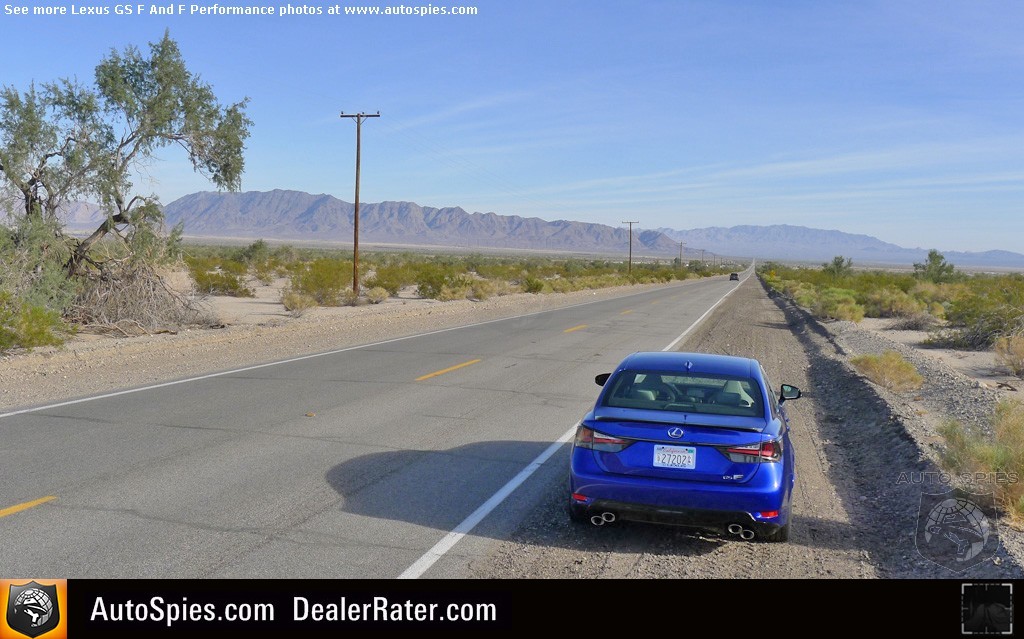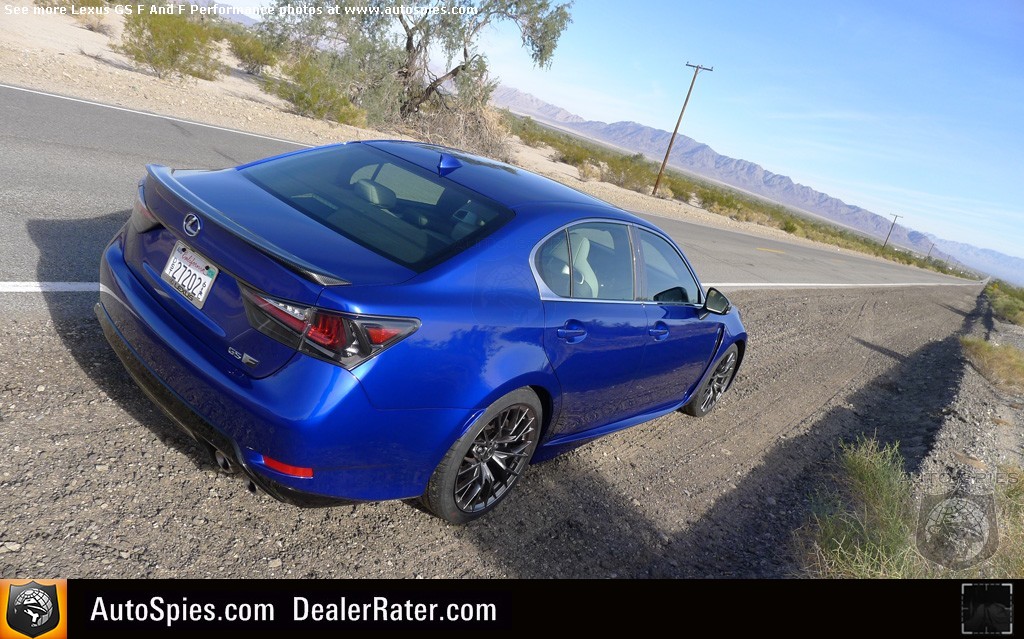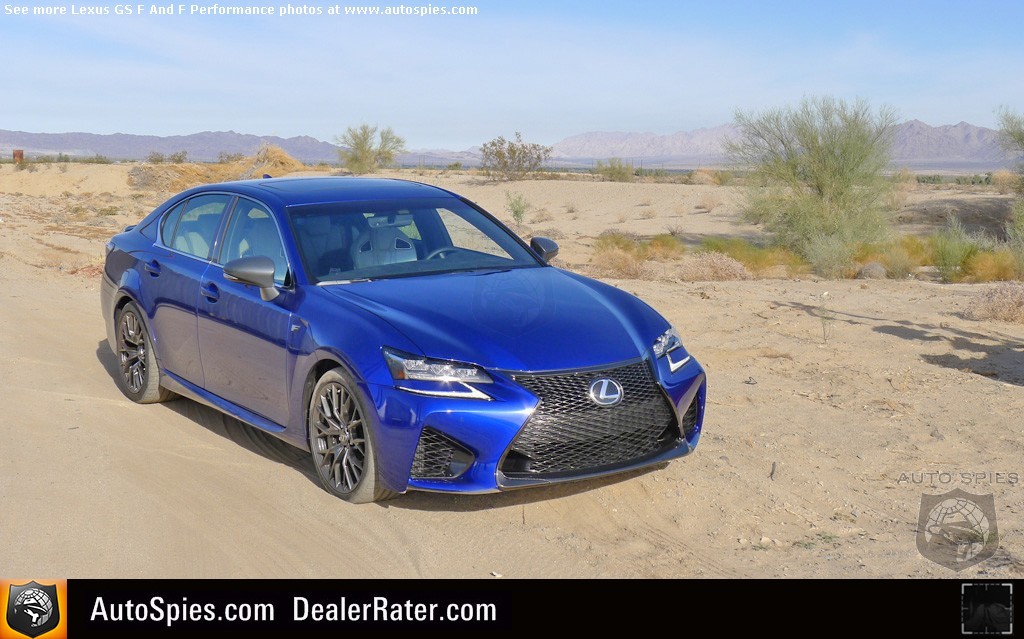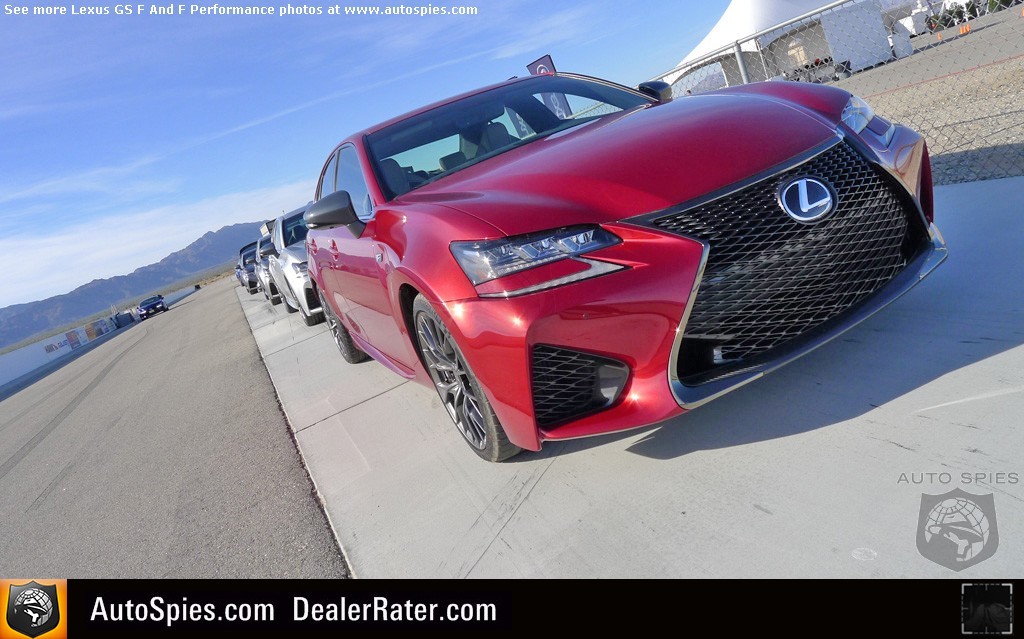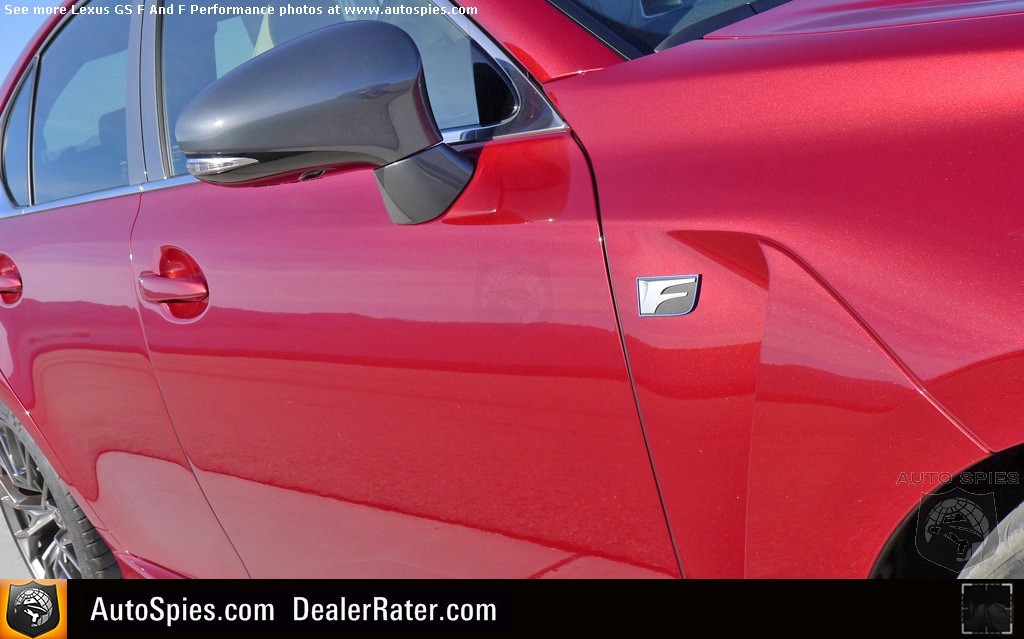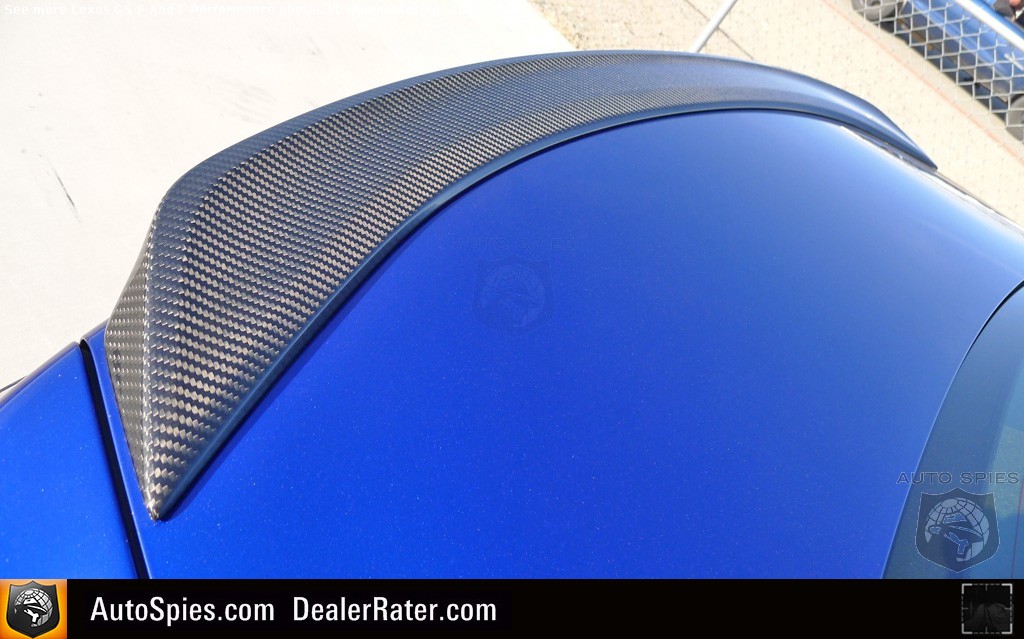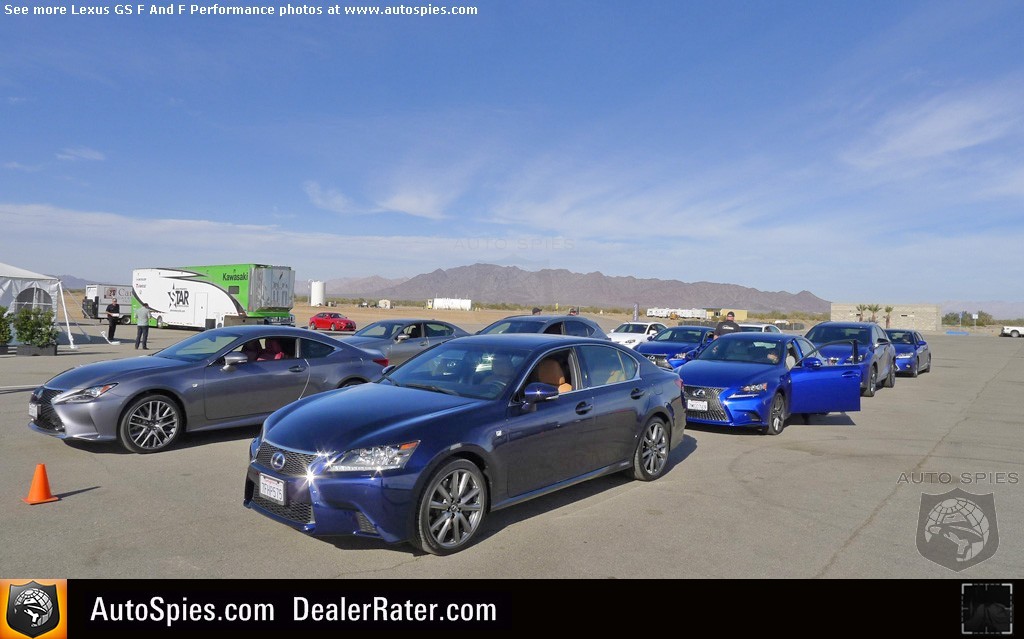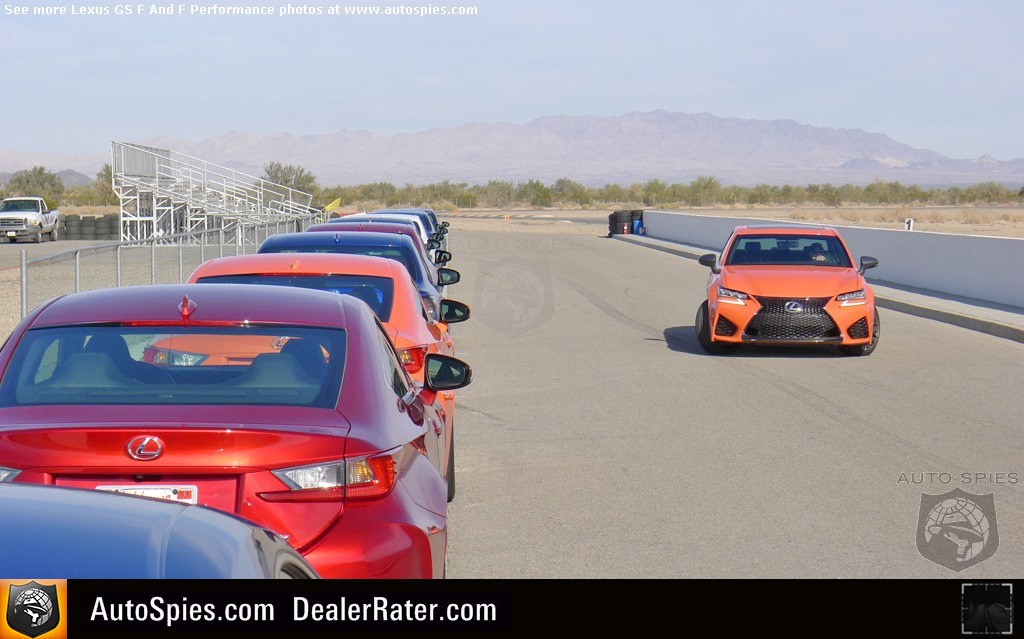Landing in Palm Springs is kind of like taking a step into another world when you're from the concrete jungle of New York City. You touch down to friendly skies, great looking people and an airport that's open air.
It's a lovely thing, really.
But certainly not as lovely as a 5.0-liter V8 good for 467 horsepower. It's pretty hard to top that. This neatly brings us to our subject, the all-new Lexus GS F.
Lexus GS F and F Performance
Competing in the rough and tumble world for high-performance sport sedans, the GS F certainly has its work cut out for itself. That's because cars like the Audi RS7, BMW M5, Cadillac CTS-V and Mercedes-AMG E63 exist. All of the aforementioned make well over 550 horsepower but they are each tuned differently and weigh a bit more.
Looking at the numbers, this is how it shakes out:
Audi RS7: 4,497 lbs., $108,900
BMW M5: 4,390* lbs., $94,100
Cadillac CTS-V: 4,145 lbs., $83,995
Lexus GS F: 4,034 lbs., $84,440
Mercedes-AMG E63: 4,431 lbs., $102,625
*With dual-clutch gearbox
What is evident is that the Lexus is the second least expensive option and it is the lightest. Those two things are positive, however, we cannot avoid the simple fact that relative to its peers it is grossly "underpowered," especially when compared to the monstrous CTS-V.
I put underpowered in quotes because 467 horsepower and 389 lb.-ft. of torque typically is enough to satiate most folks' urges. Except for the guys and girls with the 1,000 horsepower Lamborghini Gallardos, and that particularly annoying individual at the office that swears his turbocharged and supercharged whatever can hit the quarter mile in less than 10 seconds. Yeah, we get it. You watched all seven installments of the Fast & Furious and are stoked for number eight.
But rather than get bogged down by power, let's actually look at the GS F. Literally.
Lexus GS F and F Performance
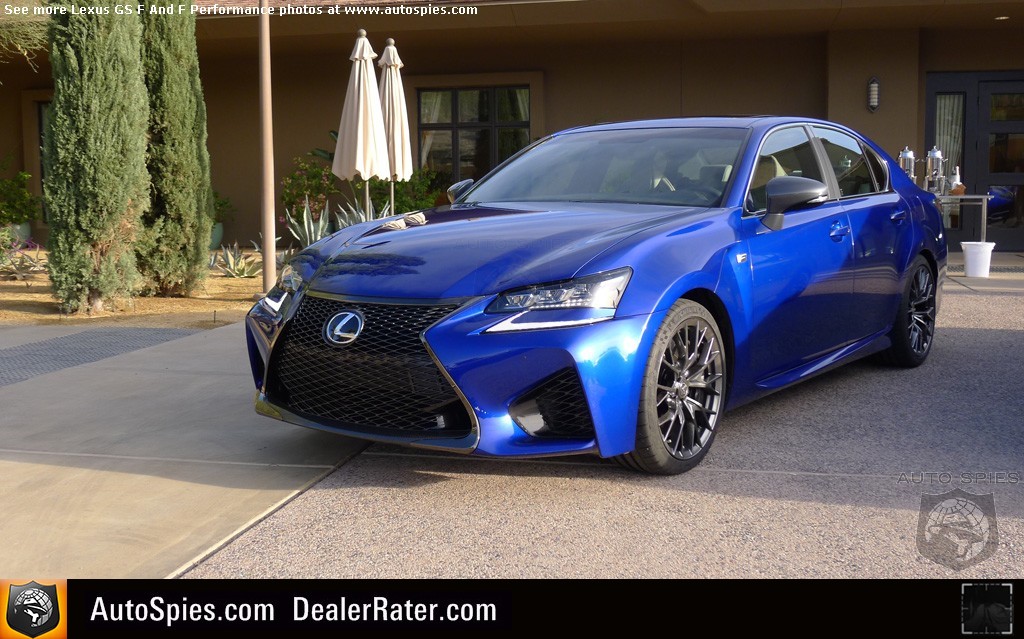
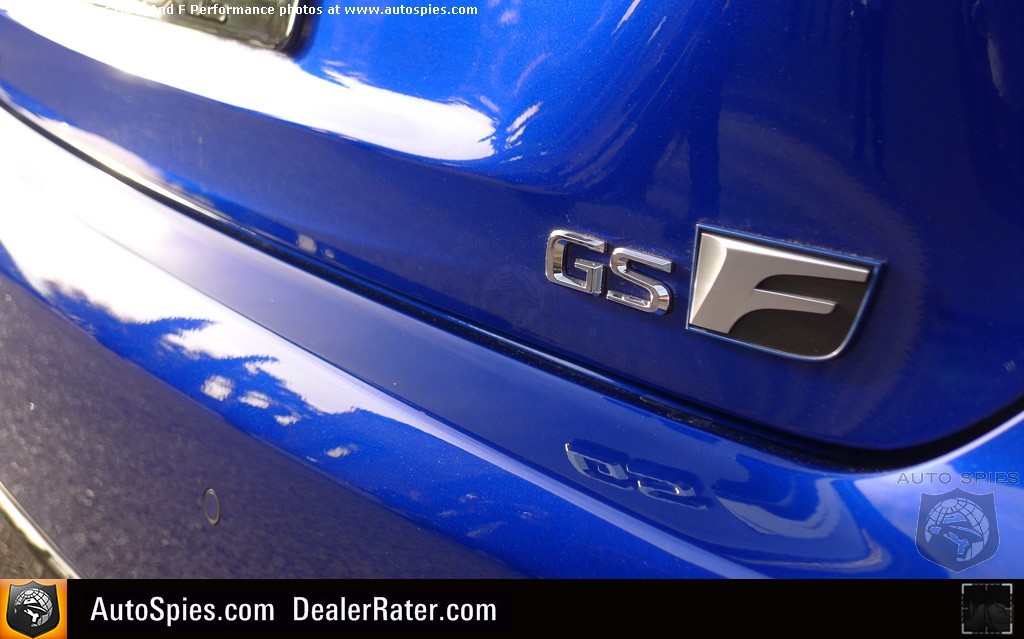

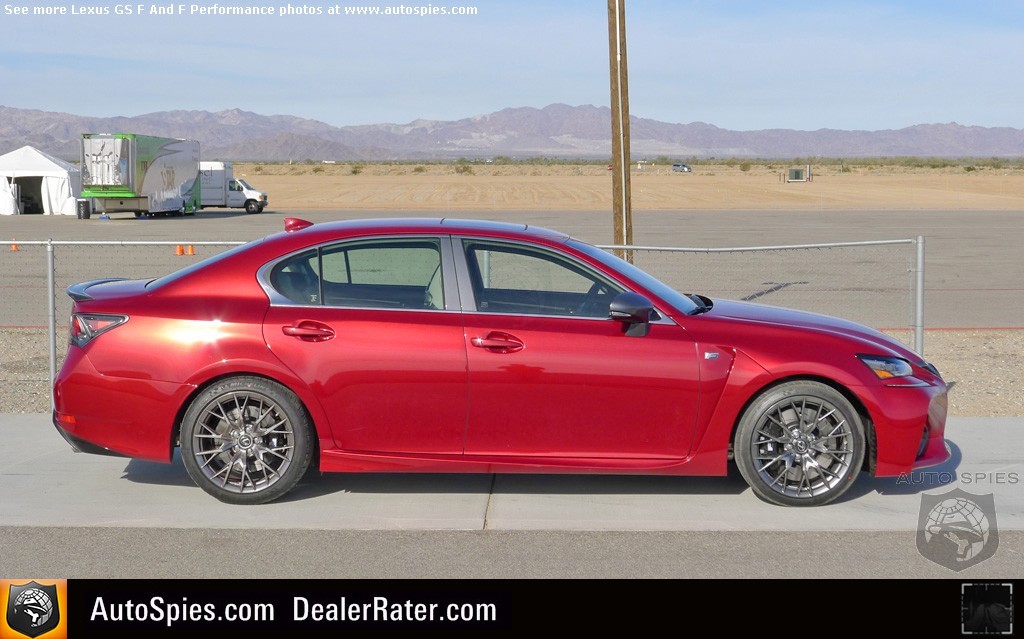
Differentiated from the standard GS model from just about every angle, it is a more aggressively designed product. At the front its spindle grille is flanked by two large intakes, you'll note its side view mirrors are offset by a gray color, the GS F's side profile is enhanced with a lower stance and a gunmetal set of cross-spoke wheels, and around the back are all-new taillights, a carbon fiber rear decklid spoiler, a rear diffuser element and a staggered, quad-tipped exhaust.
To me, with the GS F Sport so commonplace, this slightly more flamboyant GS doesn't come off as immature. Well, except for the taillights. I could do without those.
Slipping behind the GS F's three-spoke steering wheel you'll find yourself in a seat lifted straight from the RC F. This means it has an integrated headrest and pass-throughs for a four-point seat belt set up. These seats are quite good in the fact that they balance sporty bolstering without the cushioning being too stiff — if you sit in a second-gen CTS-V equipped with the optional Recaros, you'll feel my pain quite literally. Though the GS F's seats lack a thigh extender for those with longer limbs, it wasn't something I missed terribly.
Elsewhere in the cabin you'll note the use of carbon fiber for interior trim bits and the casual use of Alcantara, which I found to be a nice little touch. In addition, any keen drivers will note the dial on the center console to pick your driving mode. While you have a choice between Eco, Normal, Sport and Sport +, you'll also want to know that the button marked TVD comes in handy as it changes the settings for the torque vectoring differential — you have three modes: Standard, Slalom, Track. We'll get to this later.
It's pretty hard not to notice the massive 12-plus inch infotainment screen owning the dashboard. It's functionality is quite good via the joystick located on the center console, but in my opinion I wish the user interface was a bit more up-to-date — it feels like Toyota has been using this U/I for too long now and it is not keeping up with the latest and greatest.
As you'd suspect though, I want to get to the driving experience. So, here we go. The engine I've already brought up a couple of times and is lifted from the RC F. Of course I could sit here and question why Lexus didn't do something more significant but I will just move along because this is what the L brand delivered. No sense in harping on it now, let's just see how she goes.
Although it may not seem like 467 horsepower and 389 lb.-ft. of torque is substantial in this day and age, for me it's plenty. Zero to 60 happens in 4.5 seconds and when you wallop the throttle your core will get pushed back into the seat. Is it mind-bending power like you experience in a CTS-V? No. But one of the biggest problems with the V is that you can't use all the power. Most of the time you'll find yourself on the brake. In the GS F you can definitely put it all to use, which does make it more fun to drive.
The saying goes, "It's better to drive a slow car fast than a fast car slow."
Well, what about driving a fast car...fast?
Being a sound guy, it's important to me that a performance car has a good engine and exhaust note. As noted in my review of the RC F, this V8 has a lovely note piped into the cabin and it's enhanced via interior speakers in the GS F. Though I am disgusted by the concept, I am the first to admit that when I am moving and it sounds great, I just do not care. The reality is this: though I am not a HUGE fan of V8 engines, there is something nice about walking out into the crisp, Palm Springs air and you hear around a dozen Lexus F cars' V8 engines bassy idle.
Lexus GS F and F Performance
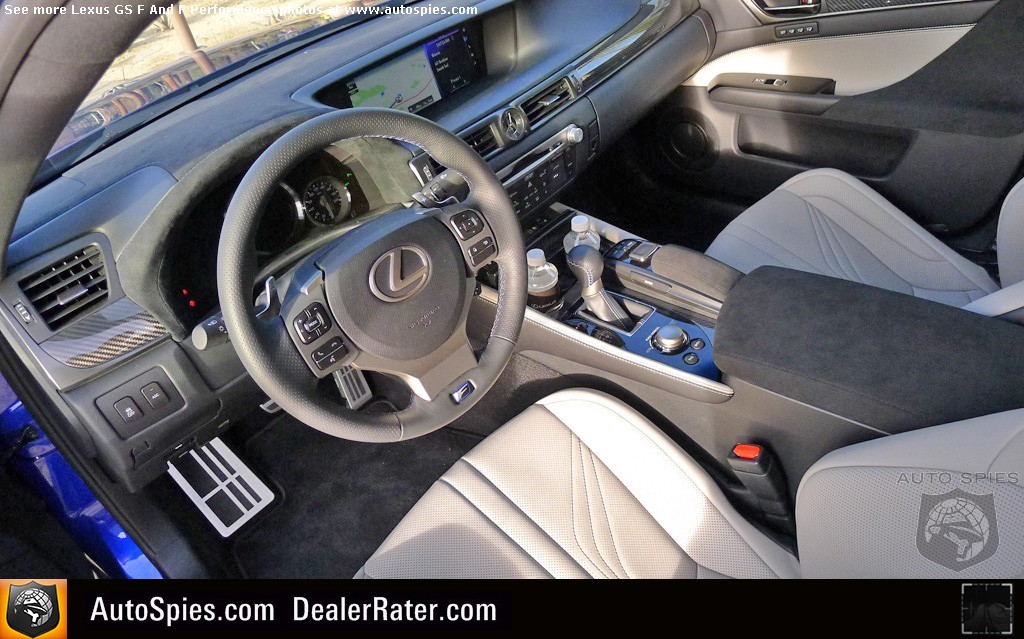
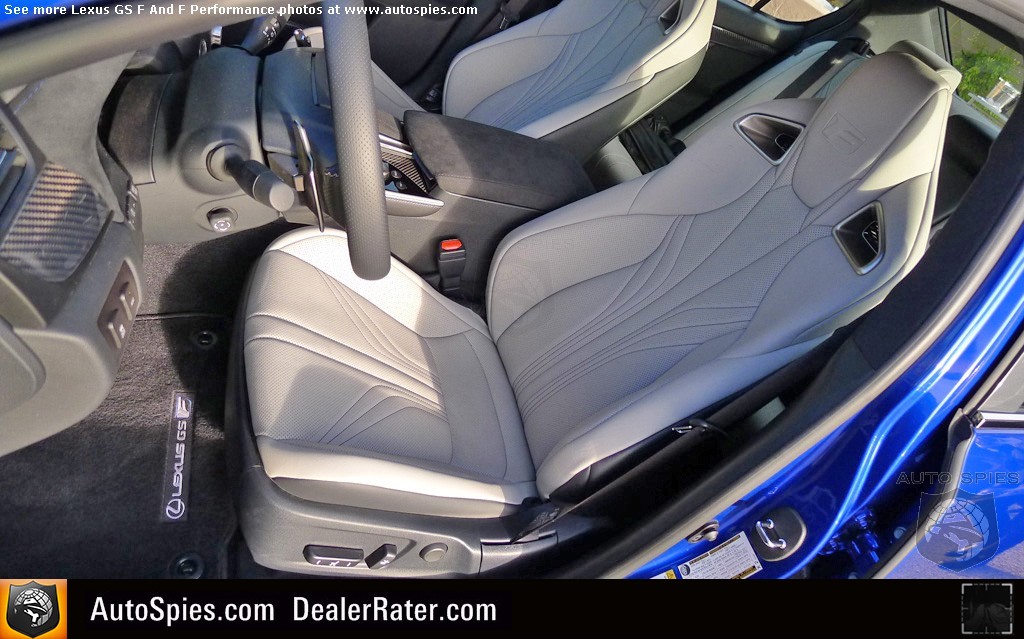
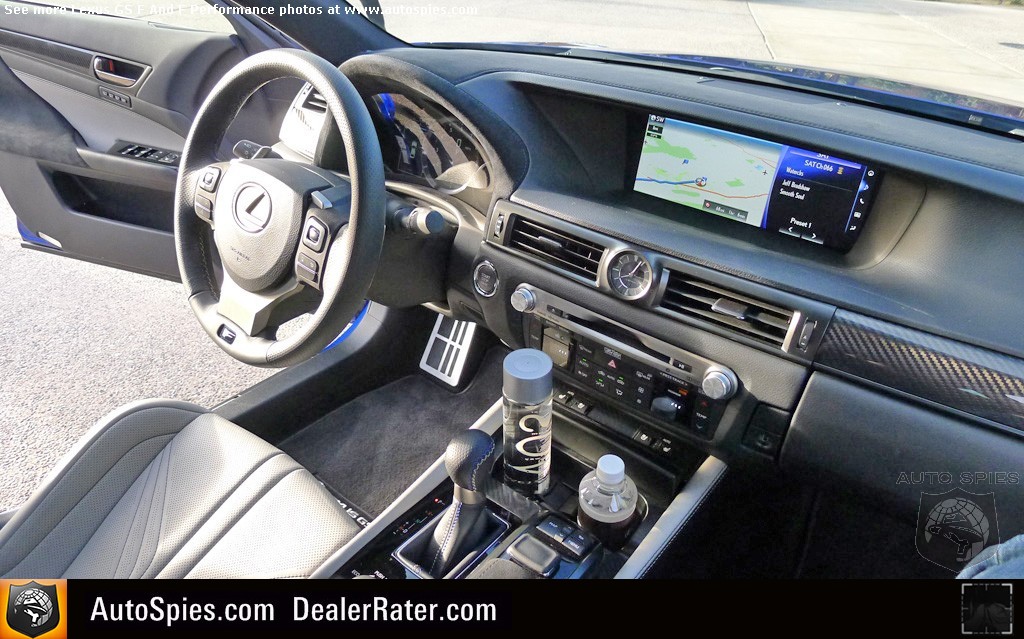

Mated to this symphony of evil is an eight-speed automatic proprietarily called Sport Direct Shift (SPDS). Although I've made a big deal about ZF's eight-speed autobox, I must say Lexus' auto is astounding when you get it on the track. Like a lot of other high-performance autos there's some software at work using a variety of sensors to make sure you're in the most optimal gear before entering into a turn. In Sport it was a job well done but in Sport + the transmission read my mind and really pushed the car at the limit — it reminded me of Porsche's dual-clutch, PDK transmission, it's that good. And there's even more good news: unlike the RC F I drove early in 2015, there was no lurching when I put it into manual mode and shifted myself via the paddles. Perhaps the engineers did some refinement for the GS F?
Now one of the most difficult things to get right in a high-performance sport sedan is its ride quality. When I drove one of the very first IS F's, it was clear that Lexus did not have the suspension optimized. I've always characterized that ride in the IS F as a Mexican jumping bean. In the GS F though those days are far behind in the rearview. Though the Palm Spring area roads were quite nicely paved, which made it tough to tell how it would handle a slew of potholes — like in the New York Tri-State region — I will say that the suspension feels very well dampened. Toggling through Normal, Sport and Sport +, I felt the suspension tighten up a little but it was not even close to being rock hard and overkill. It just felt right, which cannot be said of Audi and Mercedes' latest high-performance efforts that slam along. One thing I can be certain about: the GS F has a better ride than the NX and the IS200t. To me it's pretty hard to believe, but that's how sophisticated it feels around town and at speed.
The steering is on the lighter side but when you dial in the driving modes you will feel a bit more weight. It's free from that very artificial feeling you get in today's modern Audi RS and BMW M products. While I would appreciate some more communication through the steering rack, this isn't particularly expected in today's modern performance products. Of course this isn't optimal but this is the new normal.
What is impressive is how nimble this 4,000 pound automobile feels in all environments. On the track it feels very tossable and thanks to the Michelin Pilot Super Sport tires there's a plethora of traction as you work your way from corner to corner. Even when you overcook it or have a brain fart in a turn, the traction control system works with you instead of throwing down a gauntlet and ending all potential fun to be had.
After spending all of my time in the GS F around the Chuckwalla Valley Raceway in the middle of the desert, I hopped into the RC F for several laps. After wringing it out a bit, it was remarkable how similar the GS F felt when compared to the RC F in terms of how taut and controlled the body was. To me, that says a lot about how well engineered the GS F is. To be straightforward, I actually liked the GS F more around the road course.
Having spent some time reflecting on my experience with the GS F, I have to say this vehicle puts me in an especially uncomfortable situation. On paper, it really doesn't stand a chance against the likes of the RS7, M5 and CTS-V. But, when I got behind the wheel I thoroughly enjoyed myself and found it to be excellent all around.
And then you have to consider the fact that today's smaller high-performance sedans like the M3 and C63 S retail for about $80,000-90,000 when you option it similarly to how the GS F comes stock. Frankly, the M3 feels a bit immature when compared to the GS F and the C63 S is a bit too intimate and lost a bit of excitement in its second-generation product. The GS F wins against those two easily, in my opinion.
When you start considering the big boys, to me it really depends on who you are as a buyer. If you're looking to walk into the office to throw down the keys and brag "I have the most powerful sport sedan," this isn't the car for you. If you're looking for something that's an, overall, fantastically well-engineered product and provides you with thrills, then the GS F should be considered.
And here's the kicker: With the other guys, I wouldn't want one in my driveway after the warranty expires. Though we obviously do not have any hard data on the GS F specifically, I would feel MUCH more comfortable buying this car and putting it in my garage for many years of happy ownership. Simply put, I am not too confident in the other manufacturers and how their products will age.
The Good:
- It's pretty hard not to love the linear power of a naturally aspirated, 5.0-liter V8
- Much like the IS F and RC F, the GS F's motor sounds brilliant
- Lexus clearly made sure that the GS F would have excellent ride quality — it's a nice mix of comfort and sport
The Bad:
- Really, 467 horsepower is the BEST you could do?
- Toyota really needs to update its infotainment system's user interface, it makes no sense to have a 12-inch display if the u/i is not going to complement it
- I wish Lexus would get more of the interior details right — why are there so many different fonts and materials?
The Lowdown:
There's no question that the GS F, on paper, is like walking into a gun fight holding a butter knife. But after spending a day with it on and off track I've come to adore it. It's a blast and the power is ample for most folks. The biggest problem isn't the car though. It's the Cadillac CTS-V that comes in with a lower base price and an assload more power. The CTS-V is a complete animal and while it will cost a bit more out the door when you throw in some options, the experience is staggering. But rather than be hitting the brake almost always, I'd rather have the GS F so I can stretch its legs and hit over 6,000 revs. Though a lot of poseurs will hate on this all-new Lexus F car, I have to say that the unique buyer will give this car a shot and may wind up taking this home over the usual suspects.
Lexus GS F and F Performance
